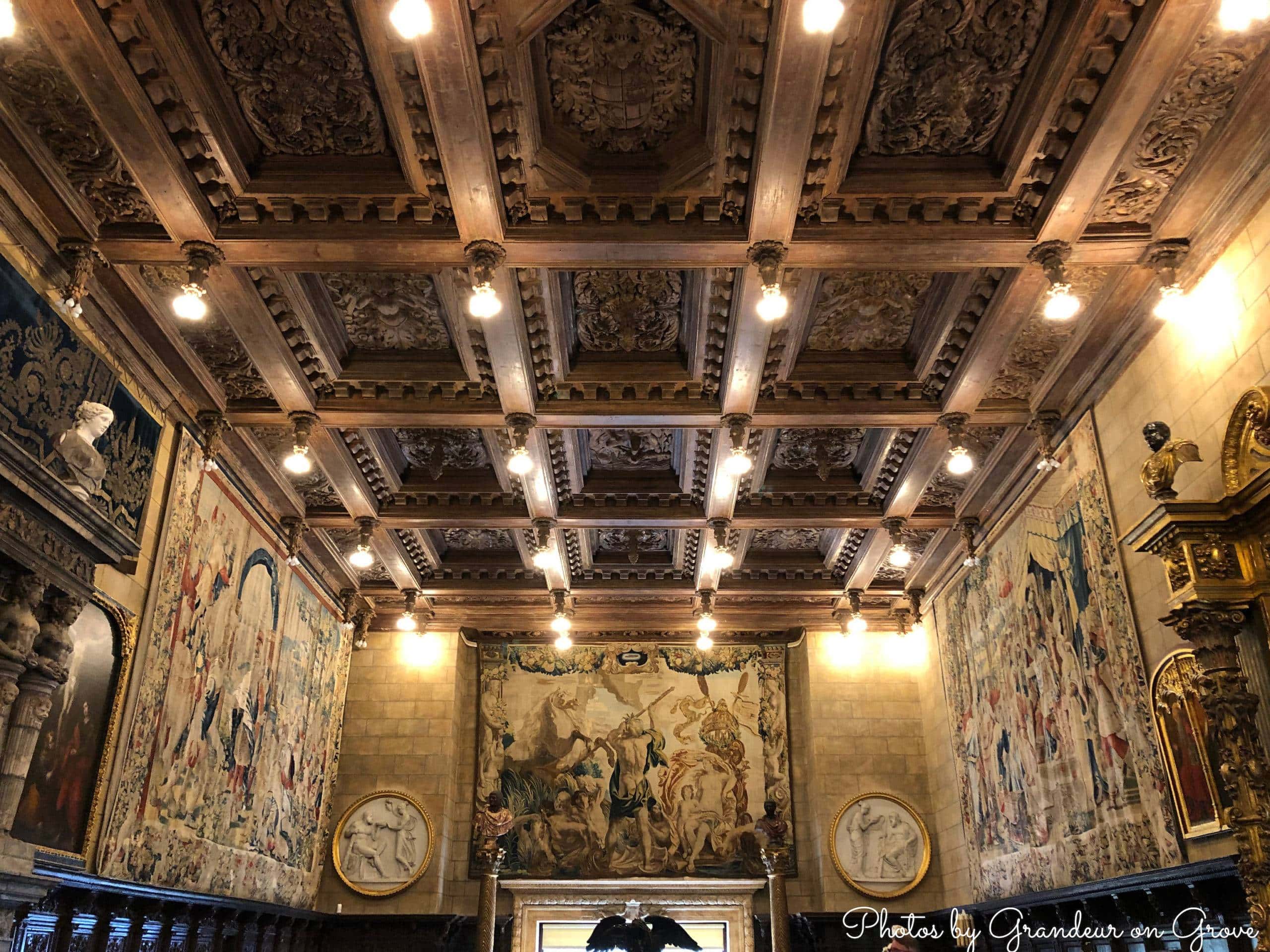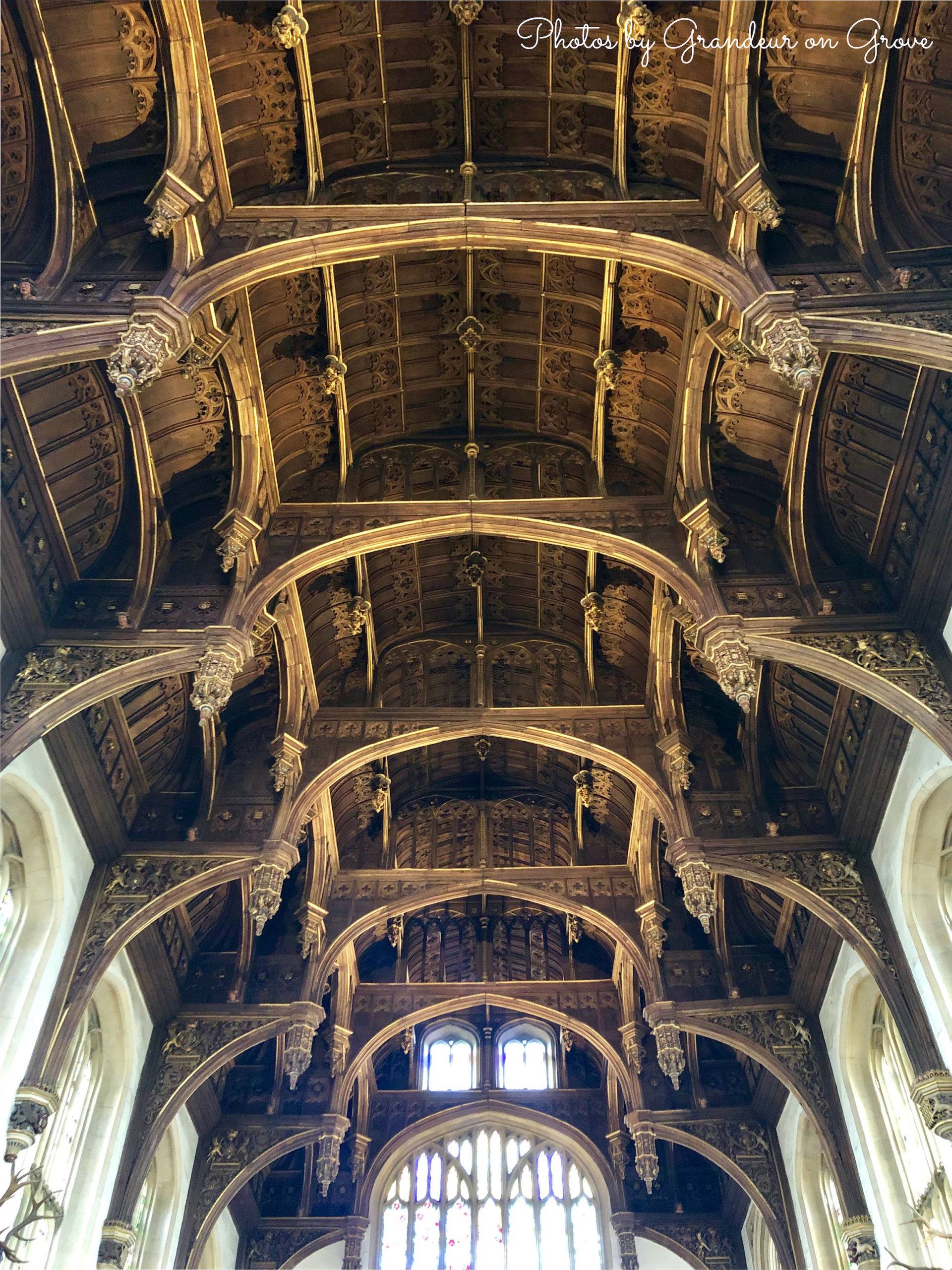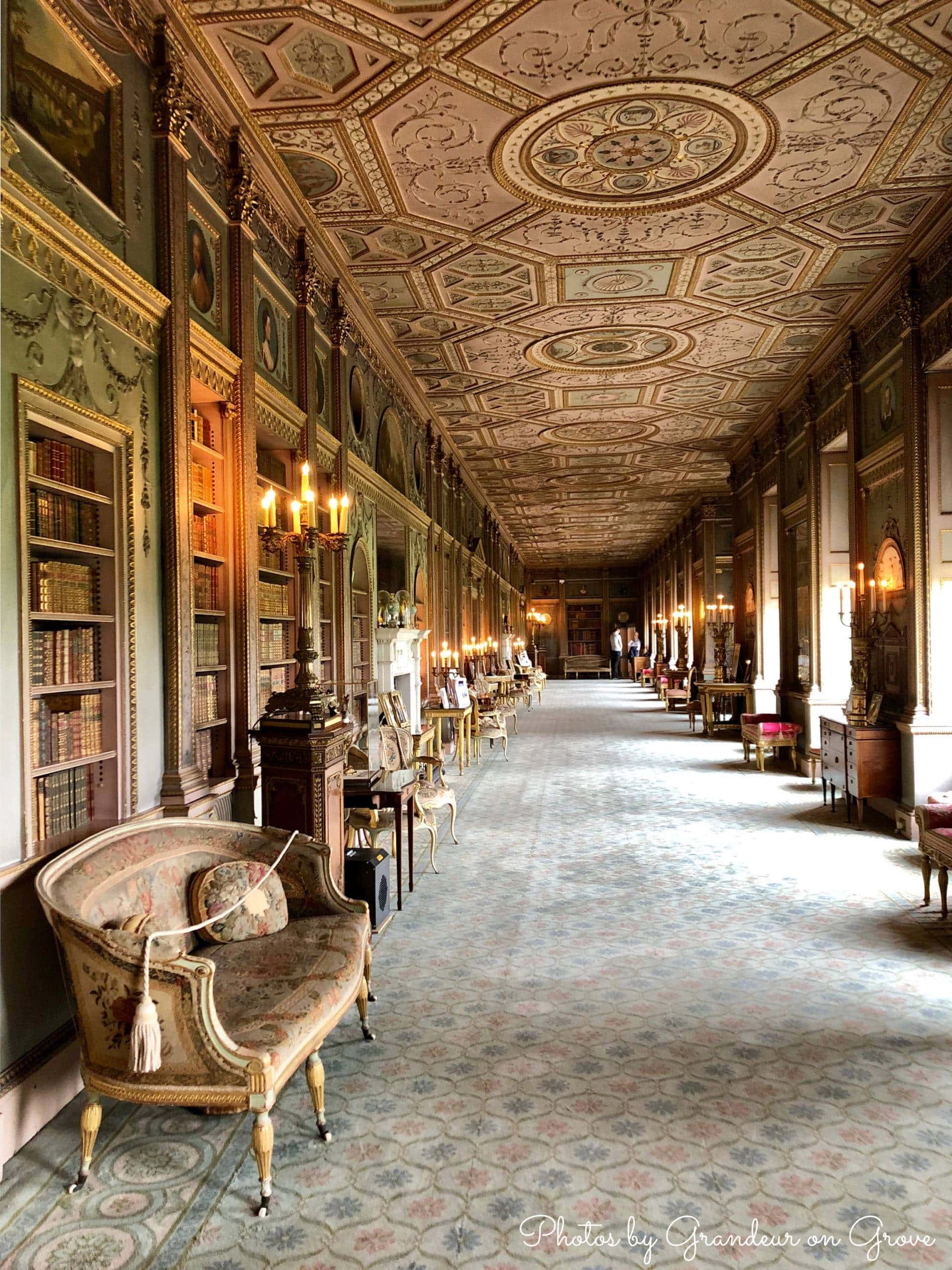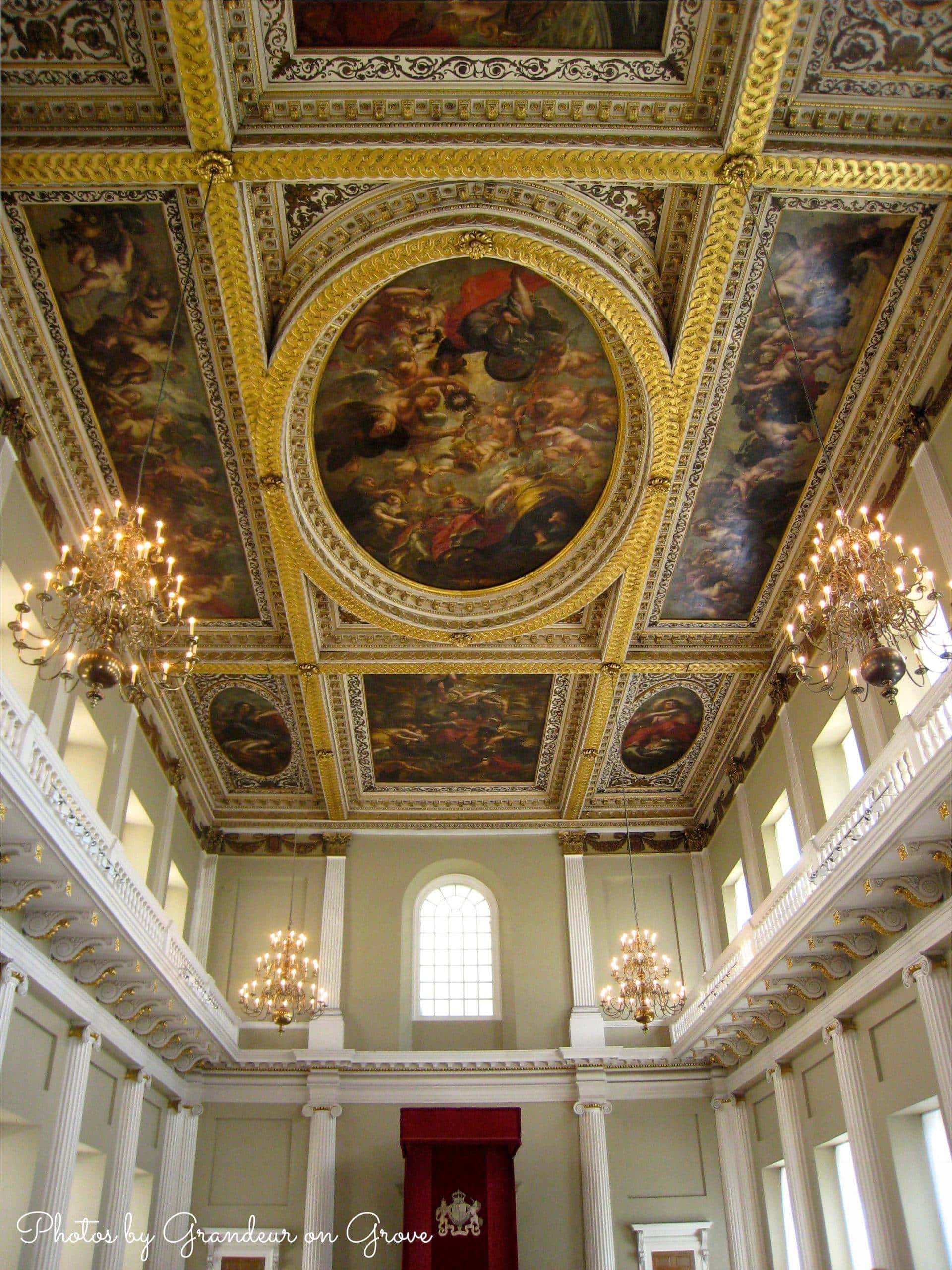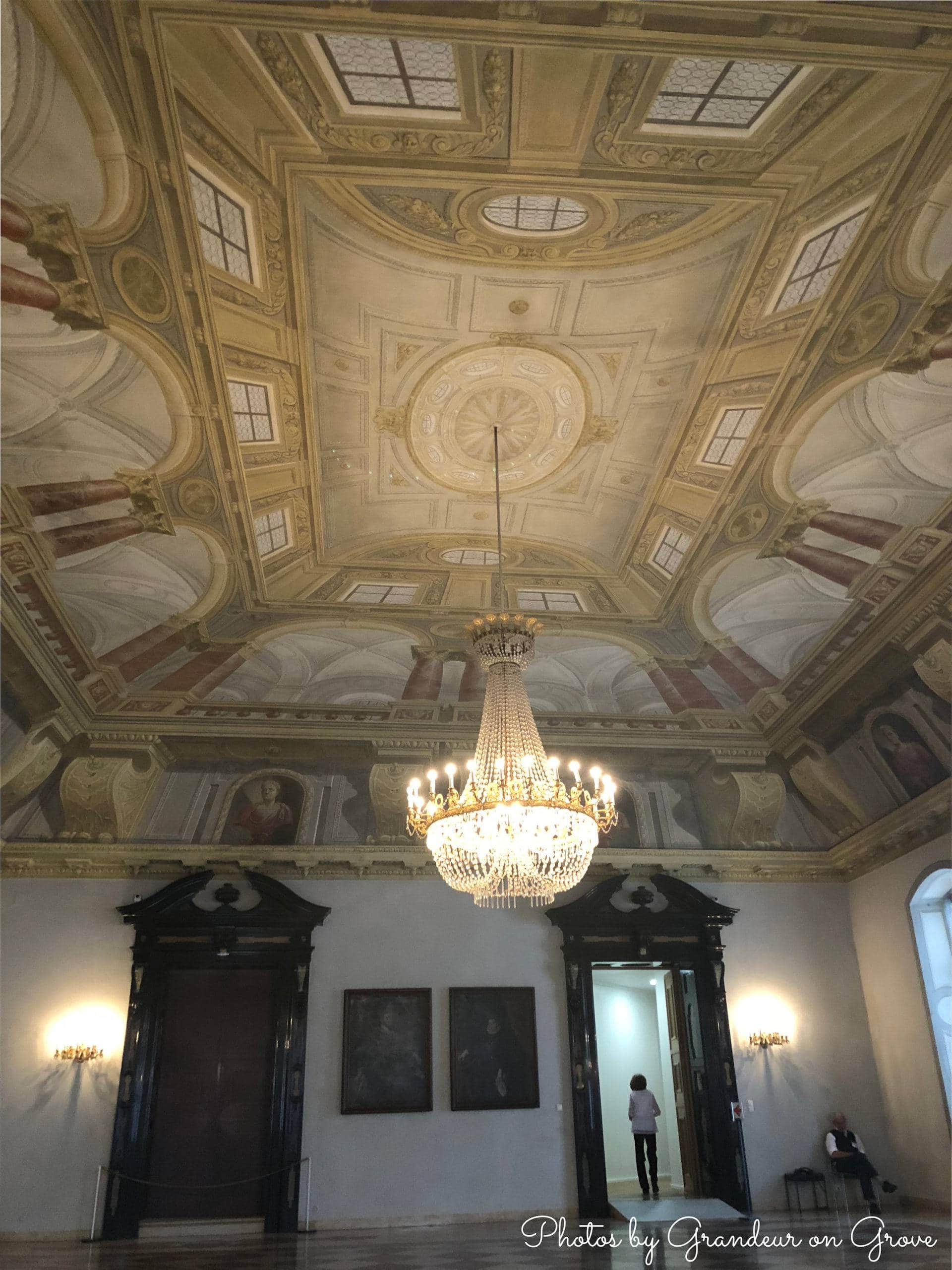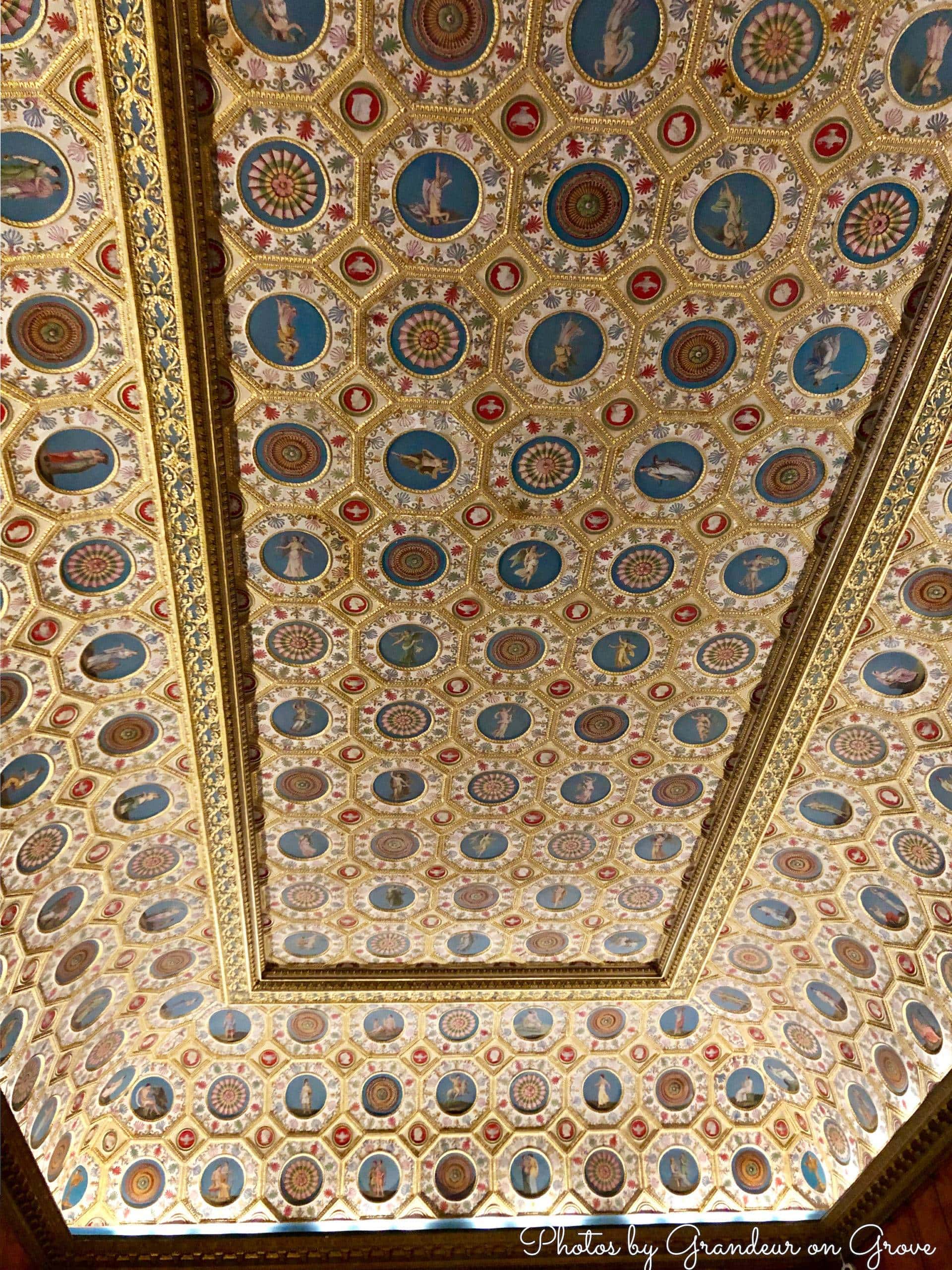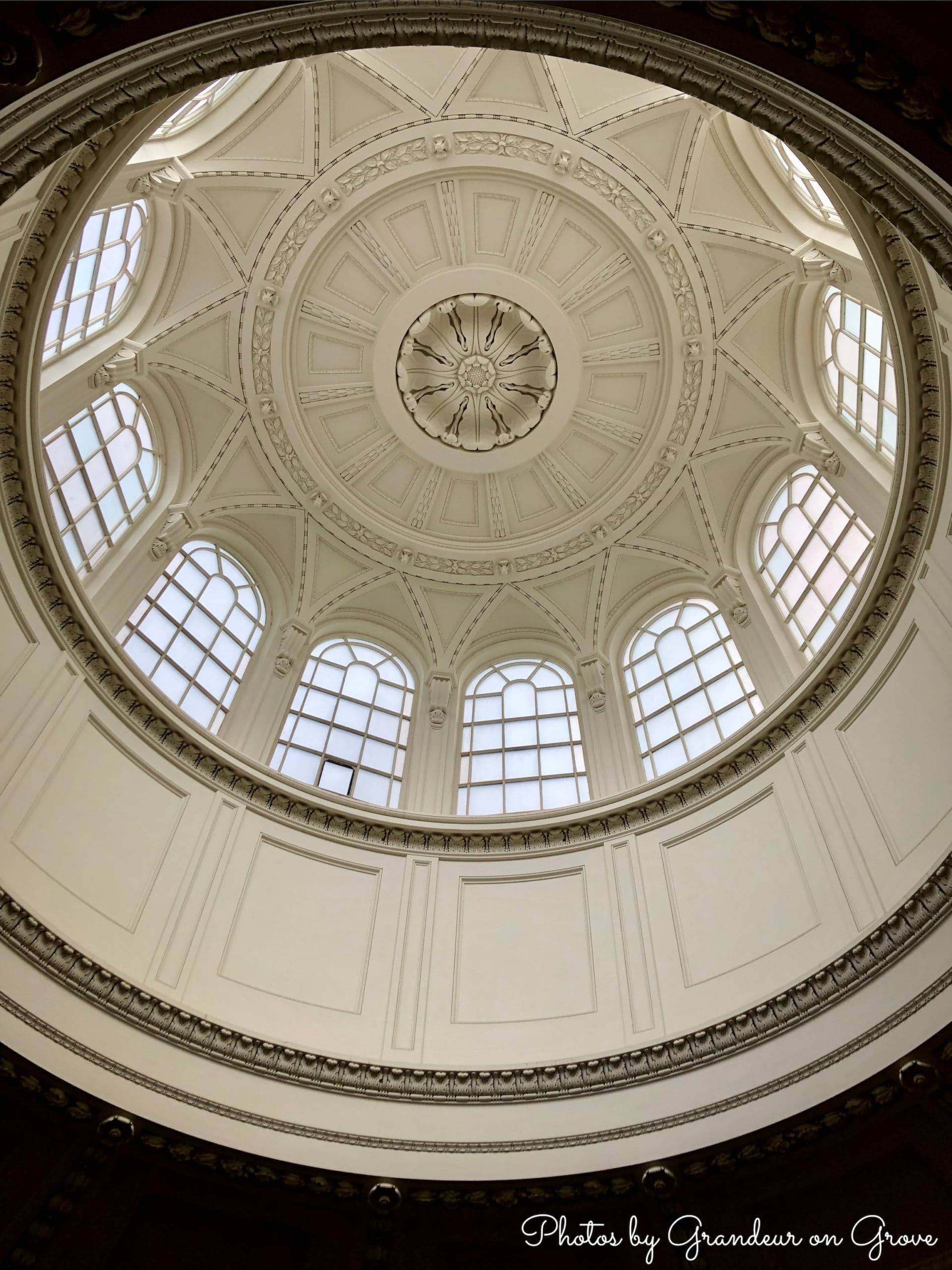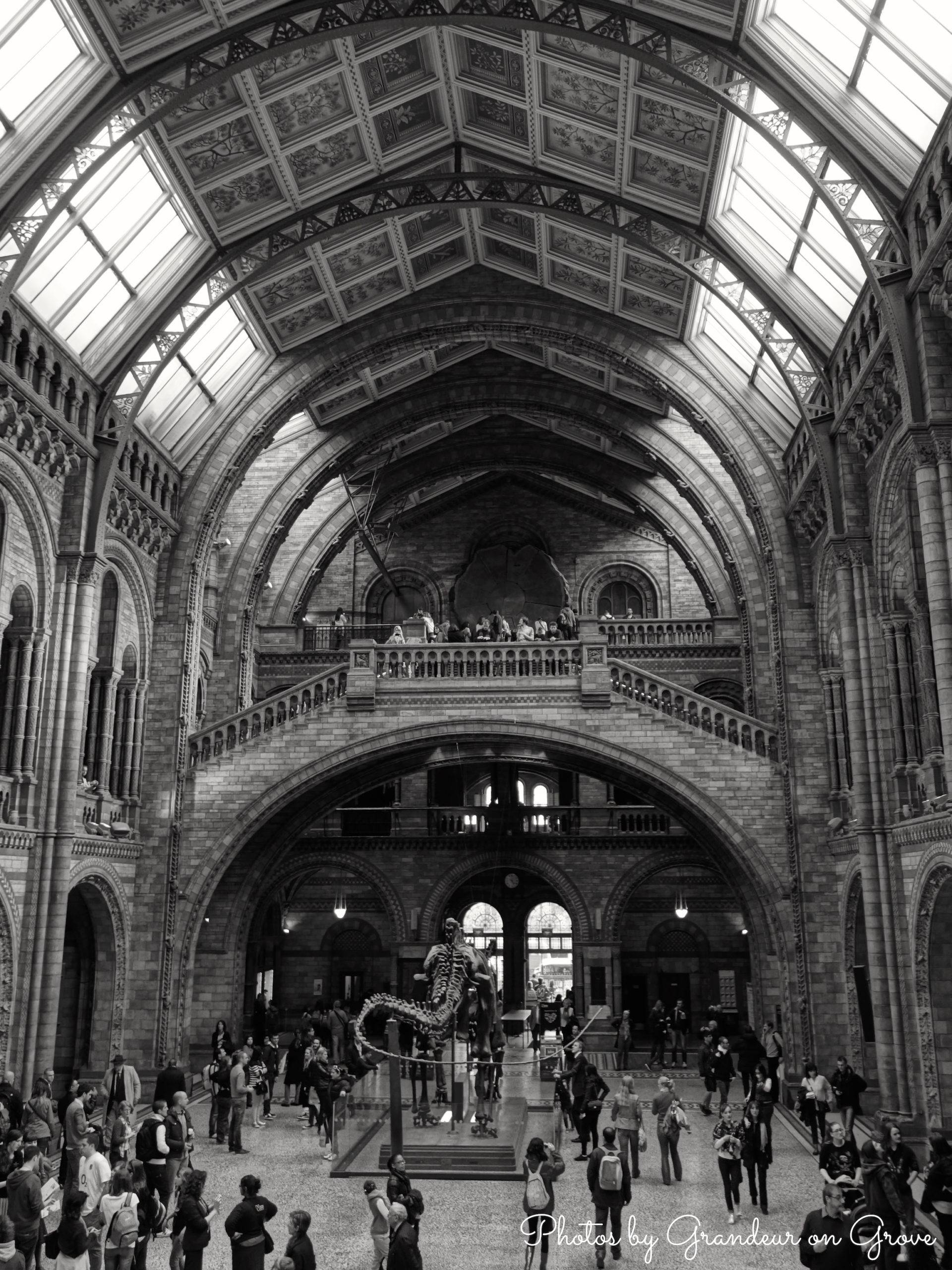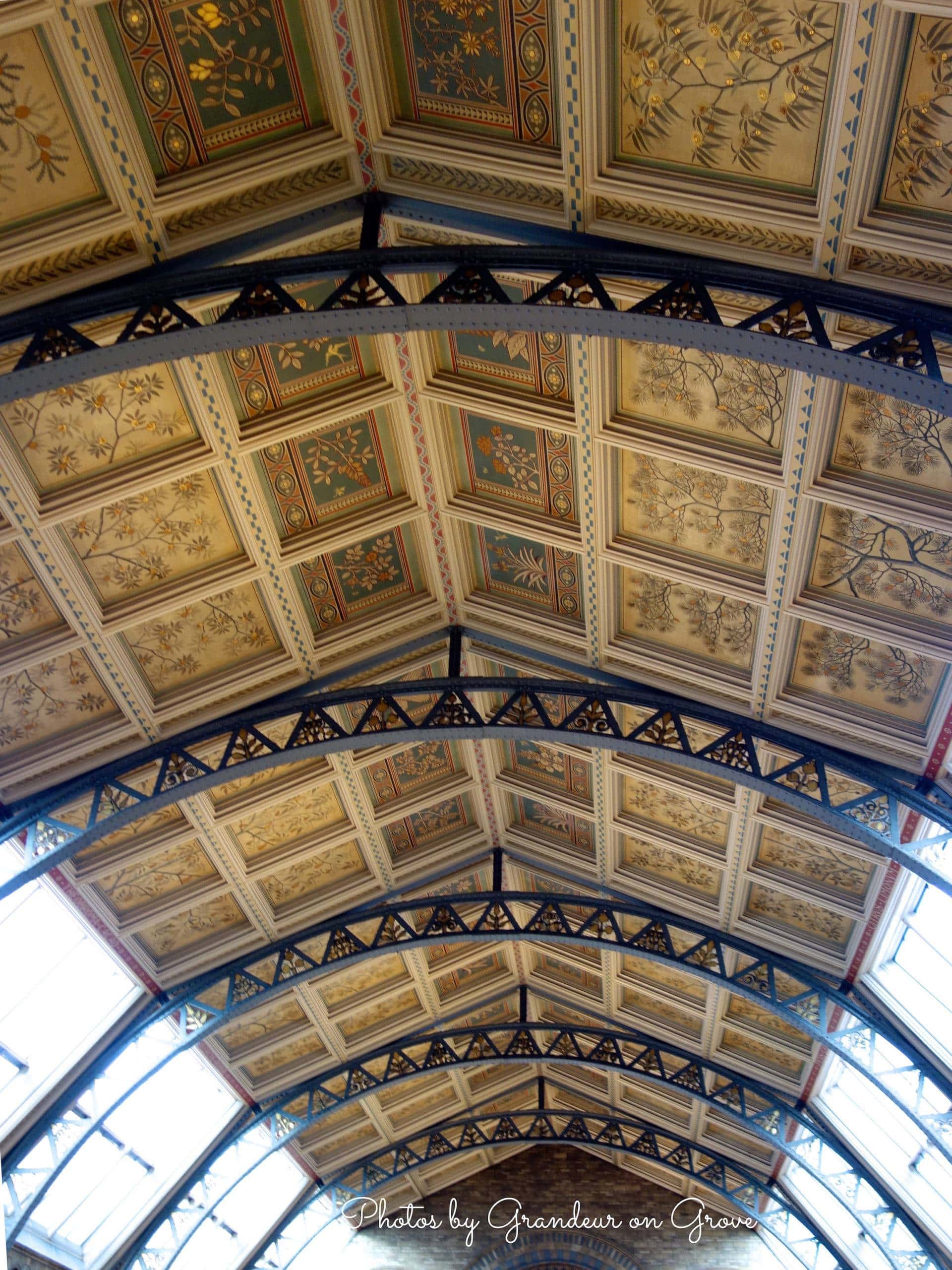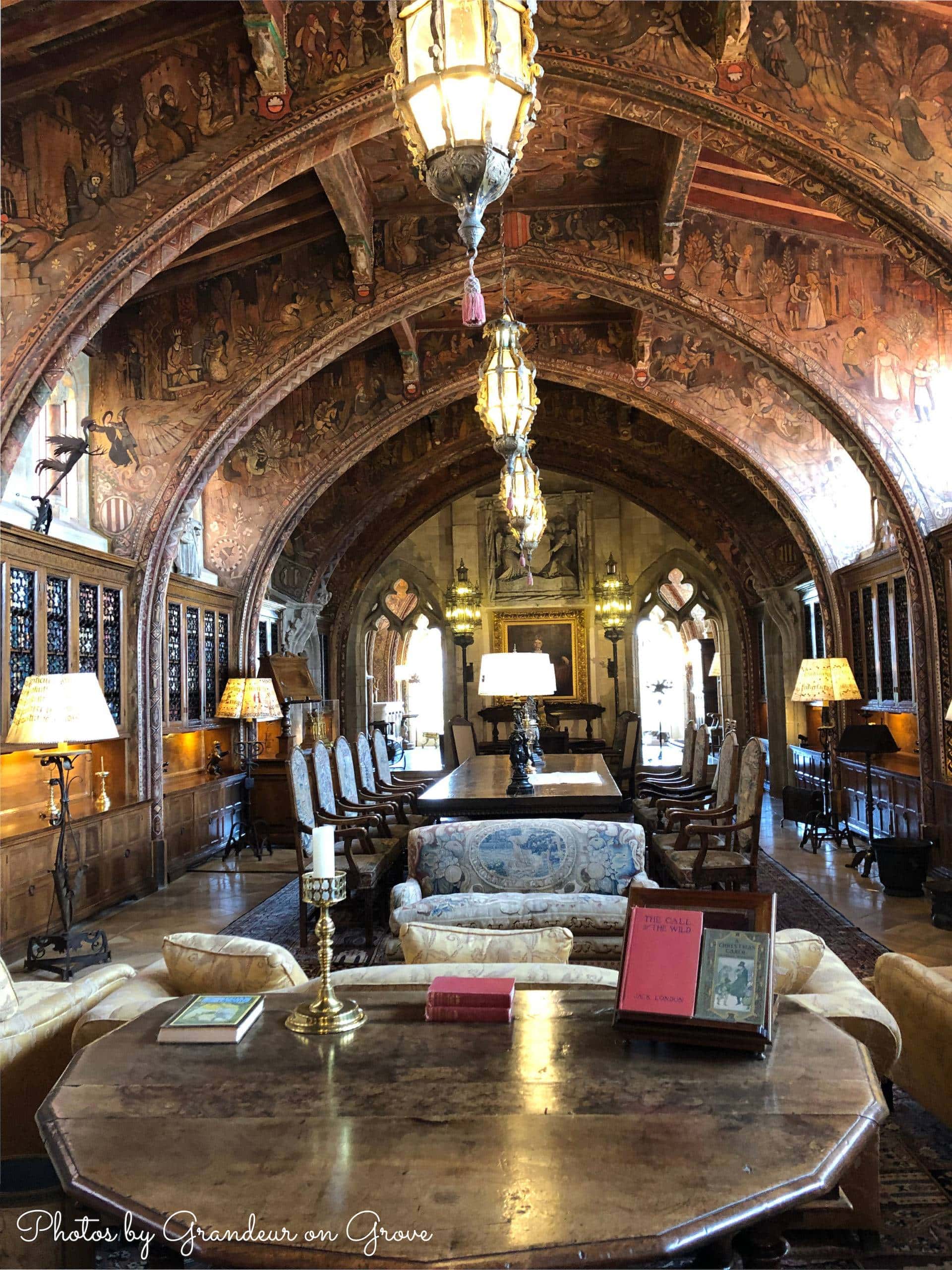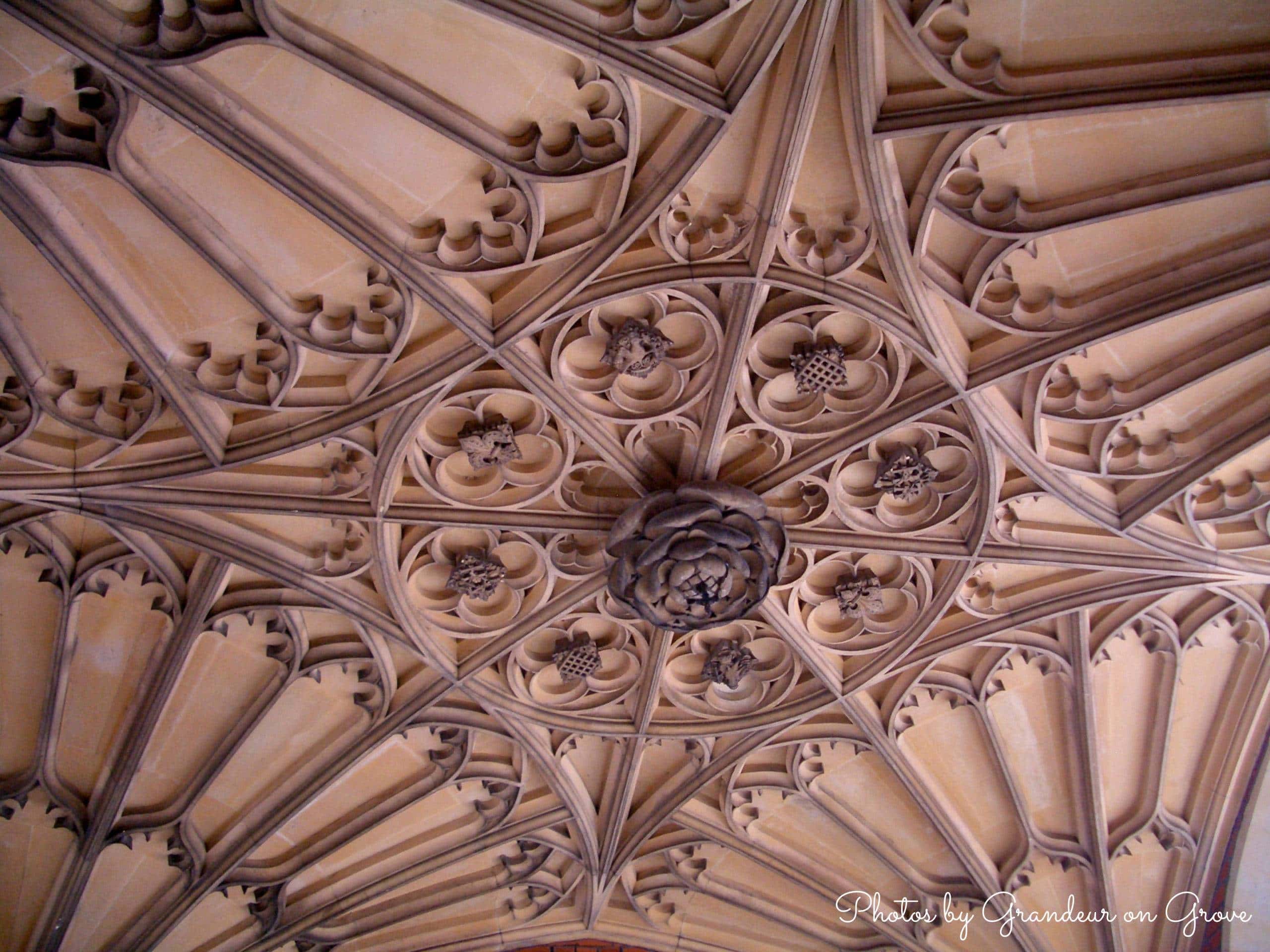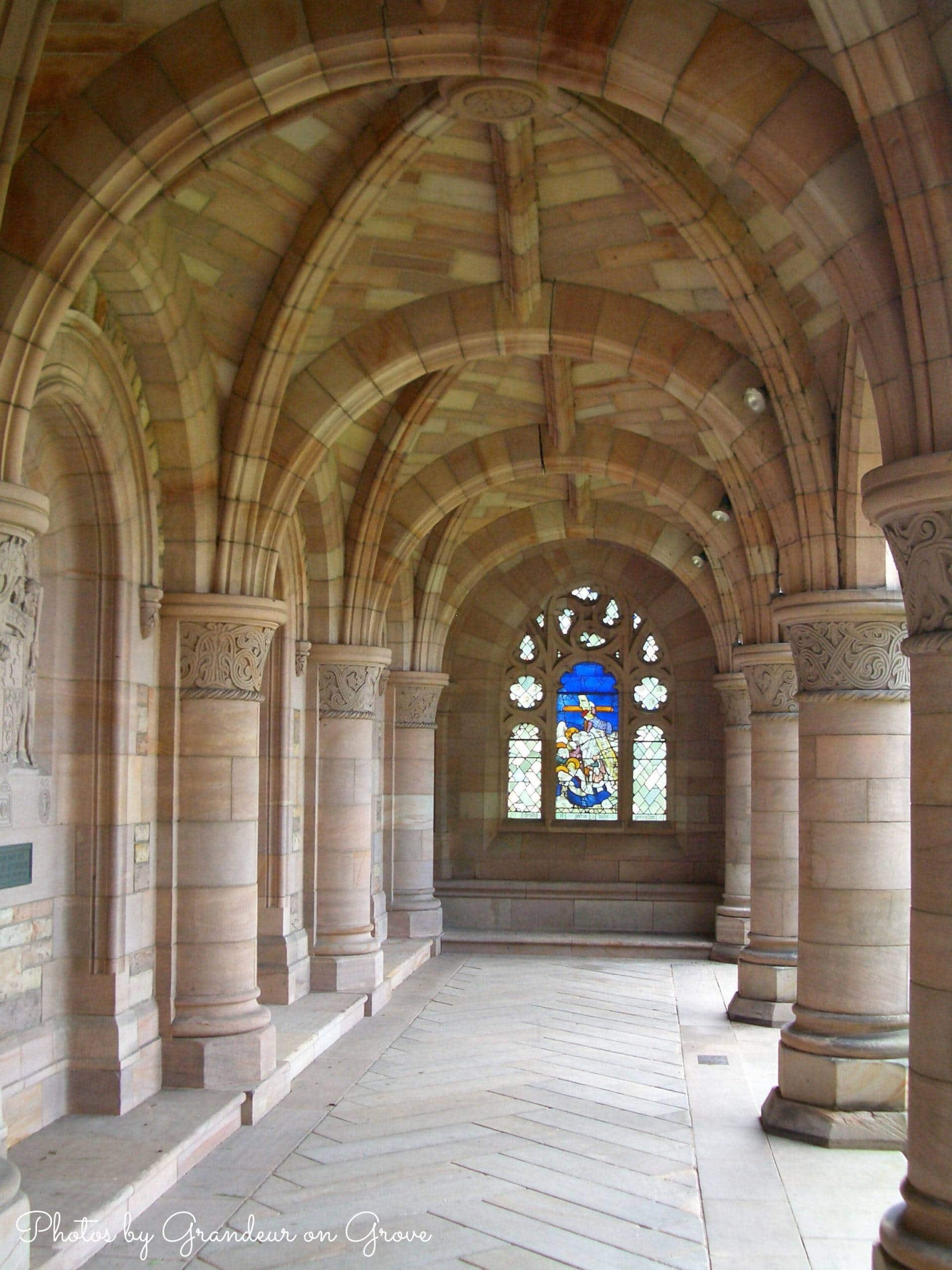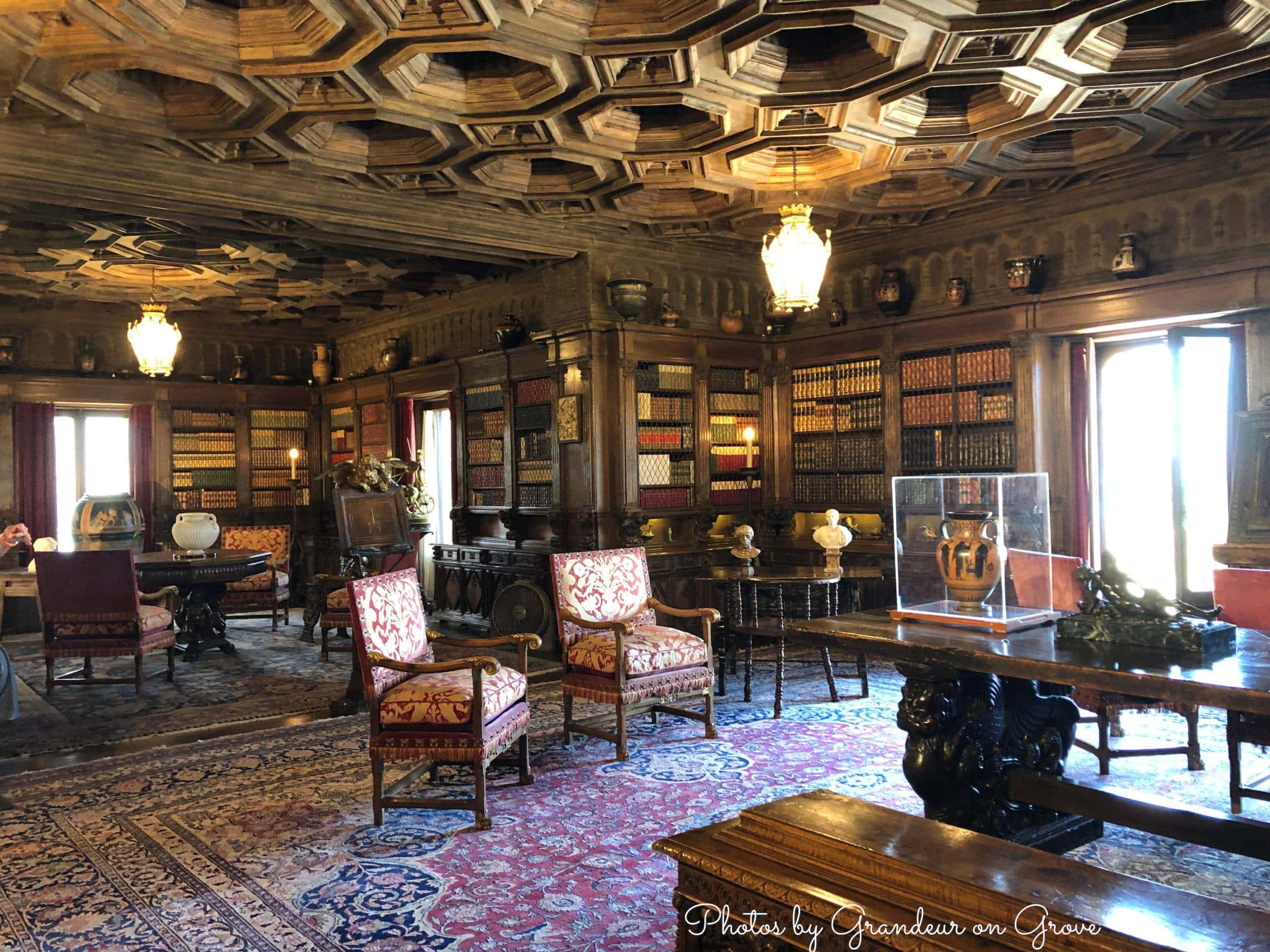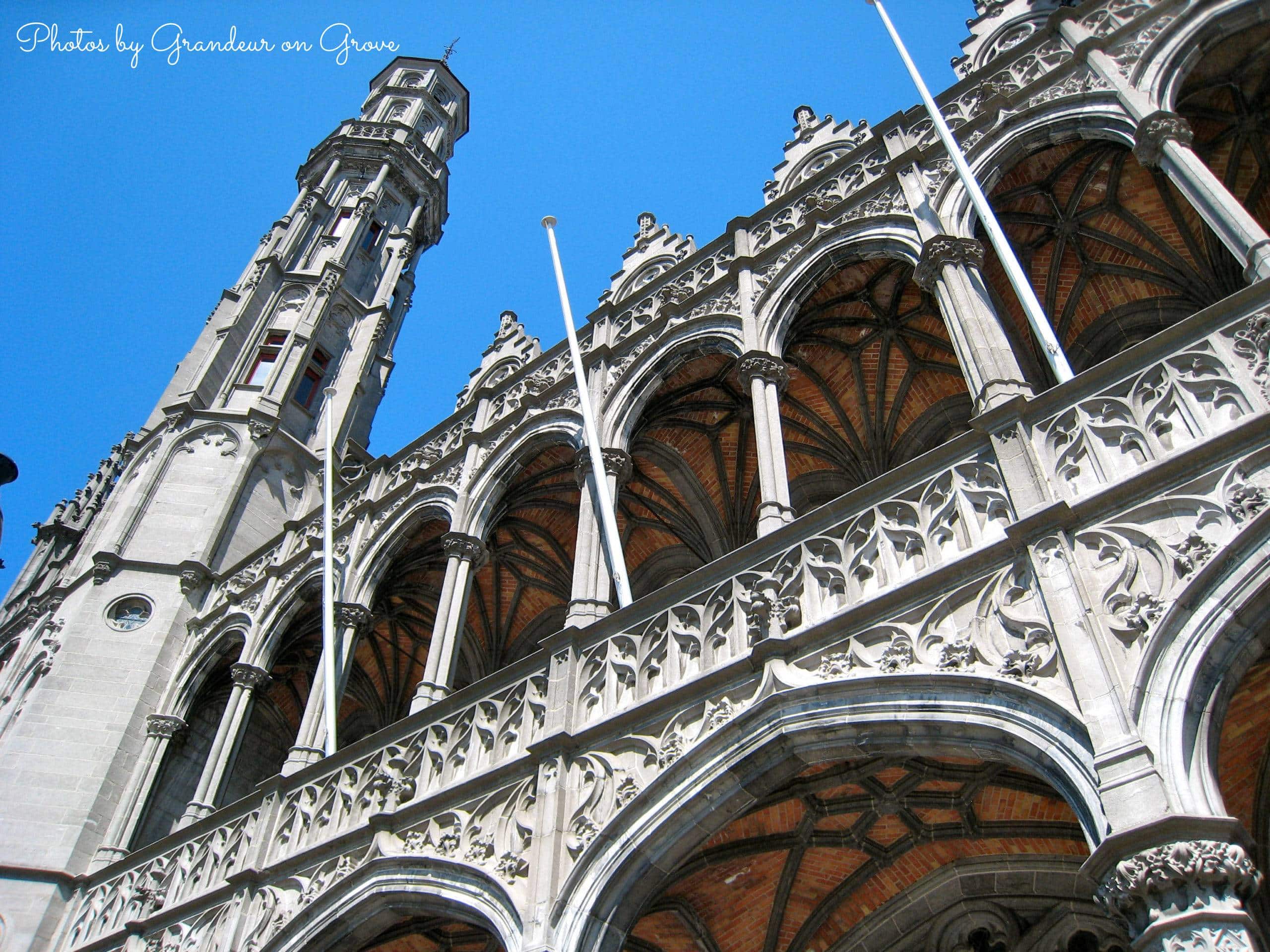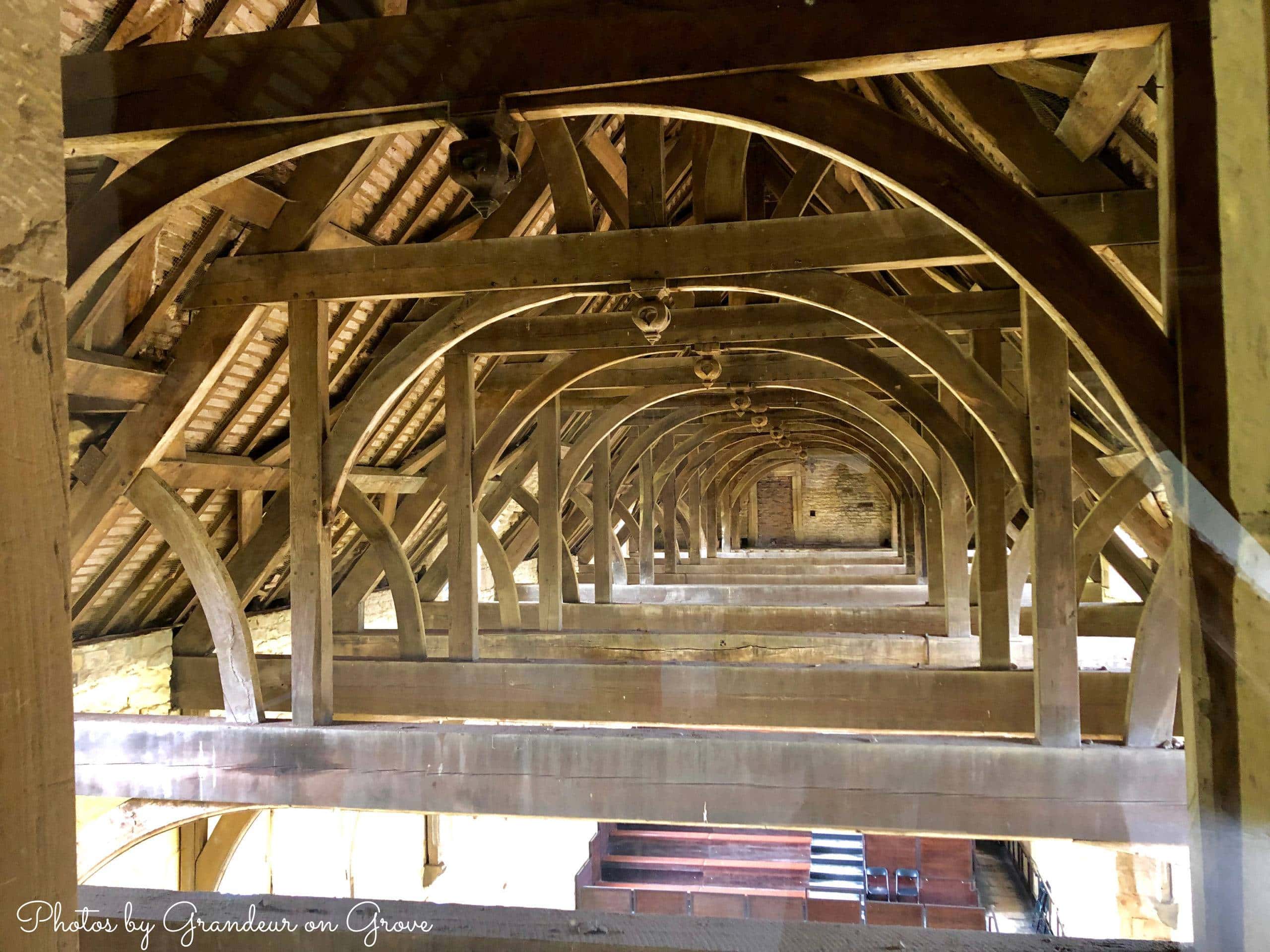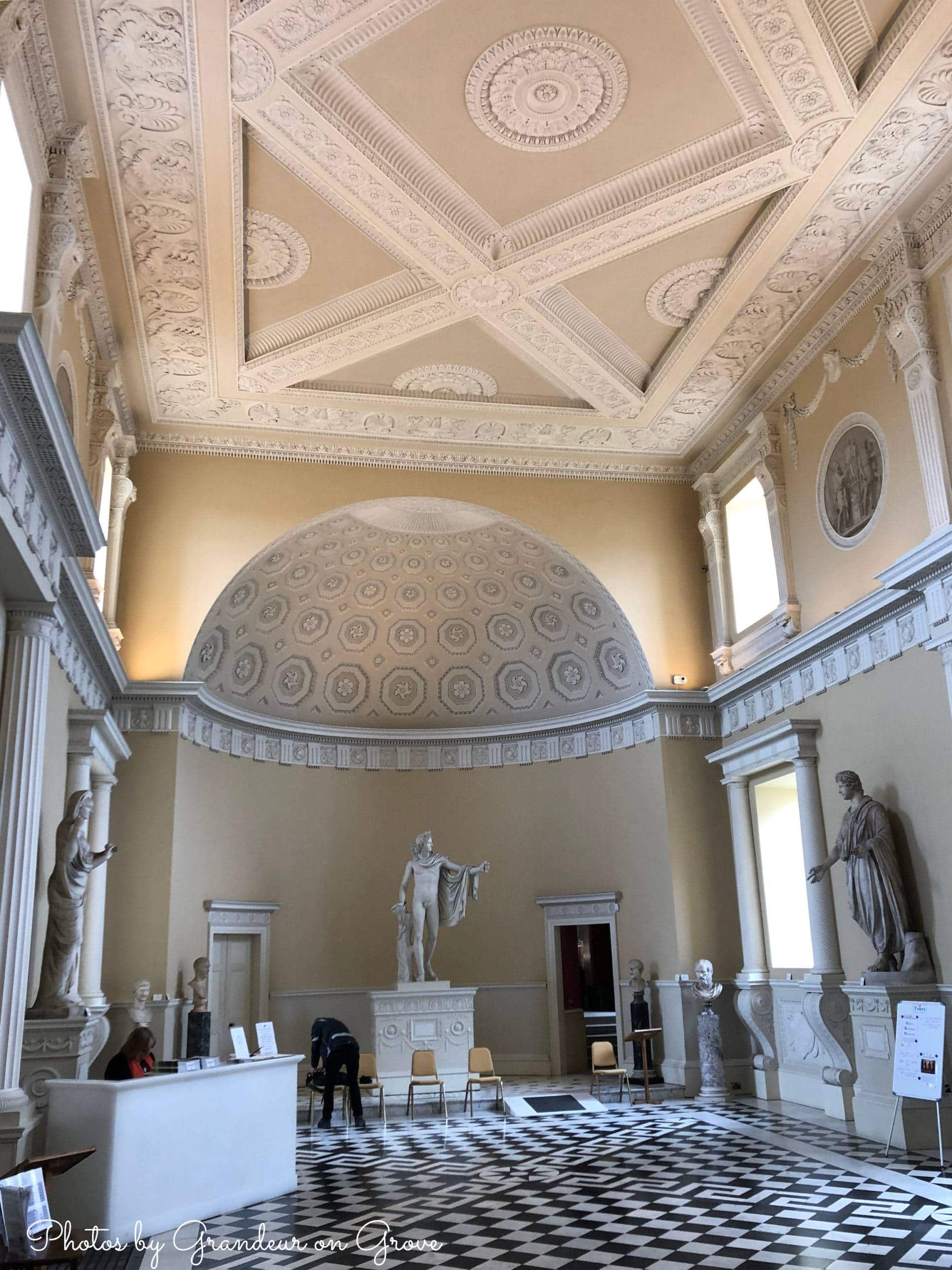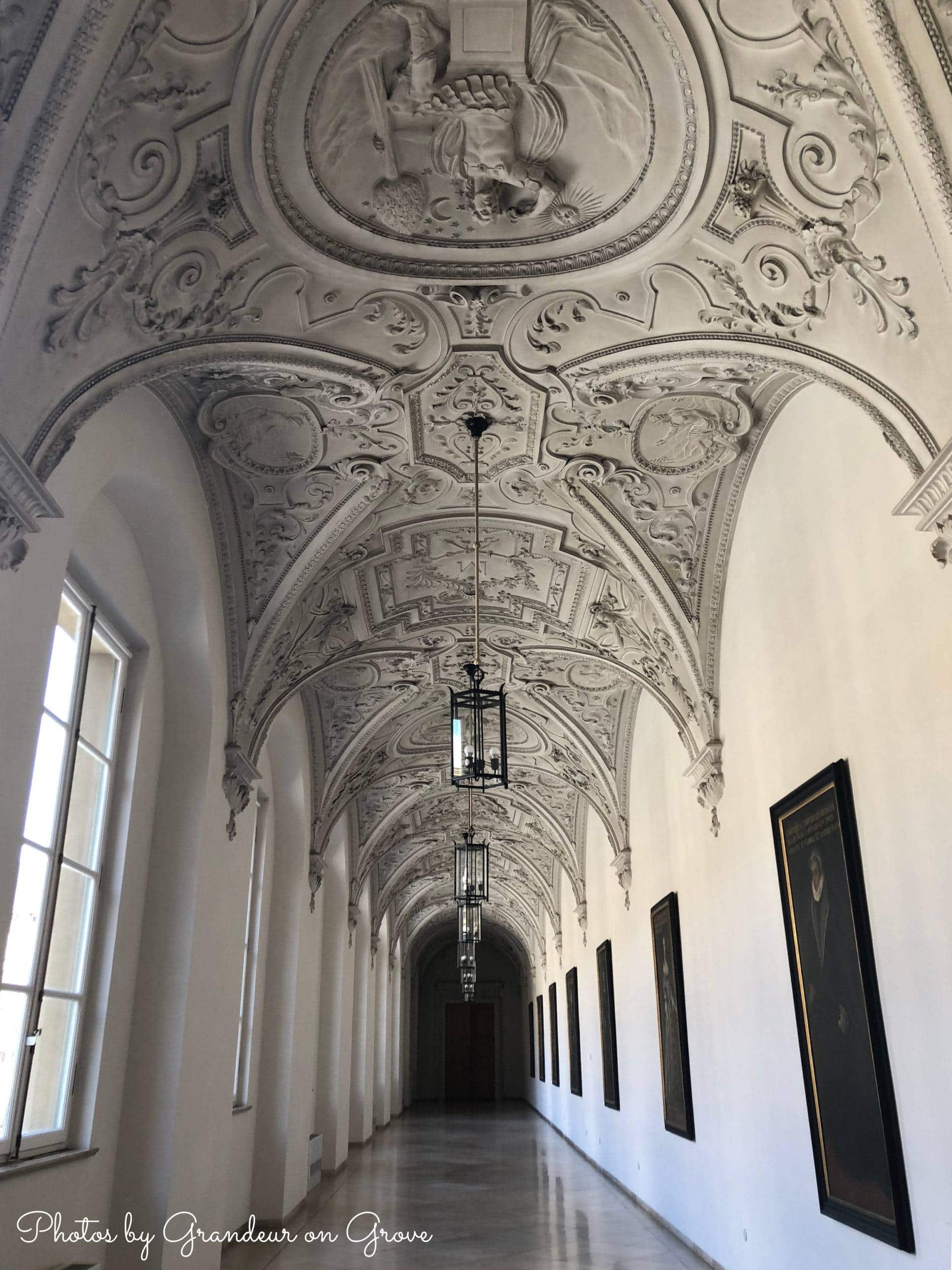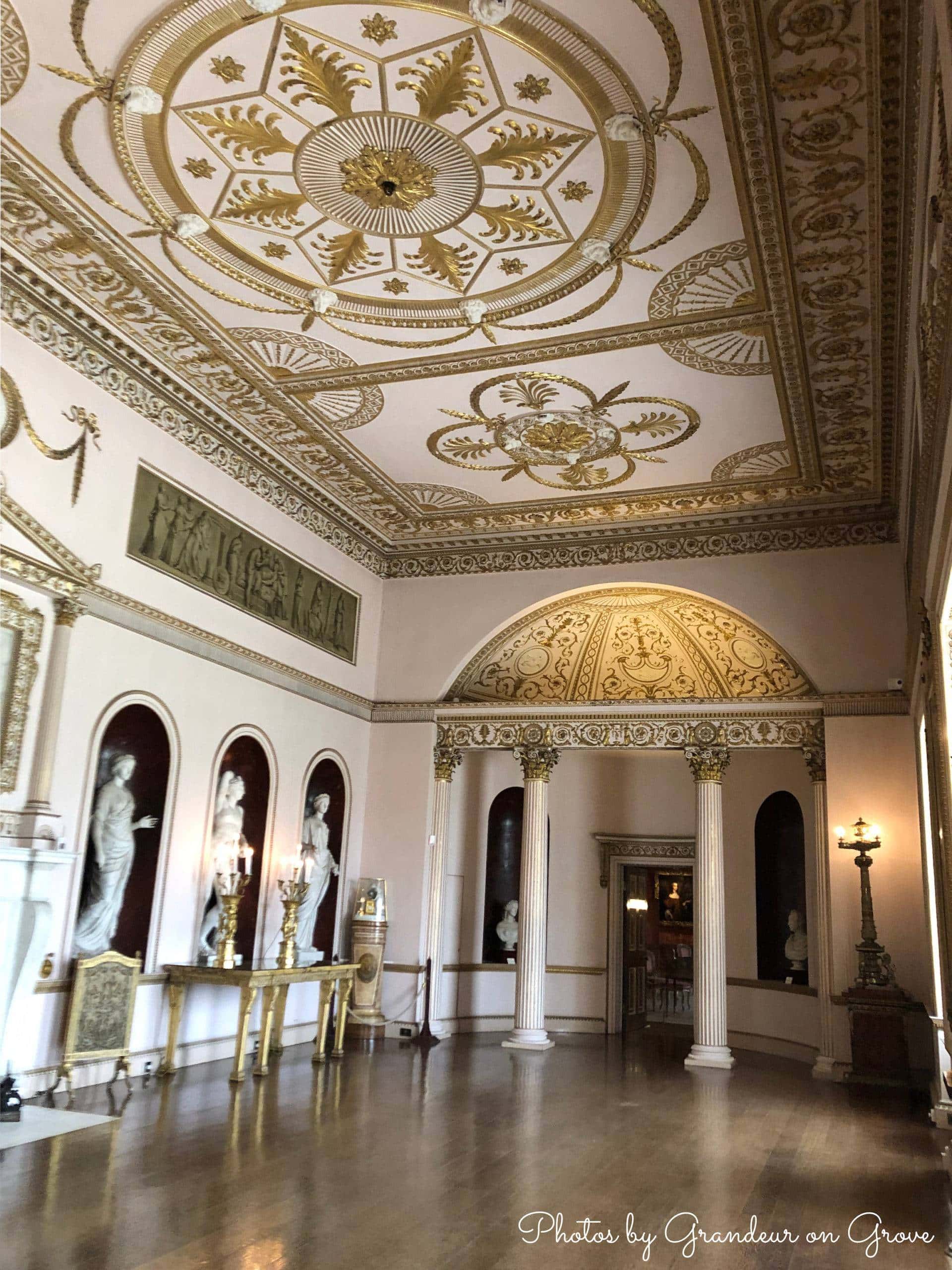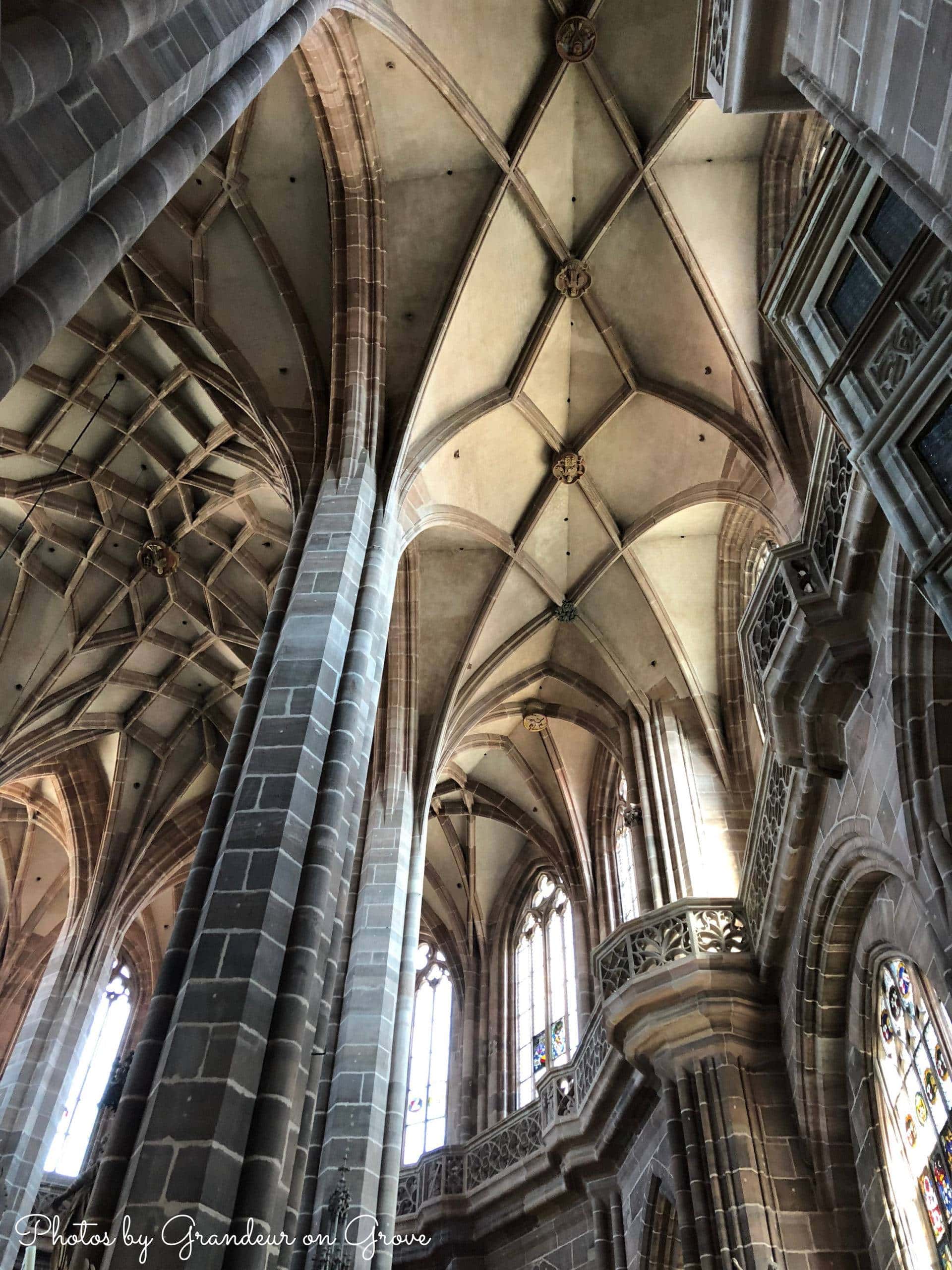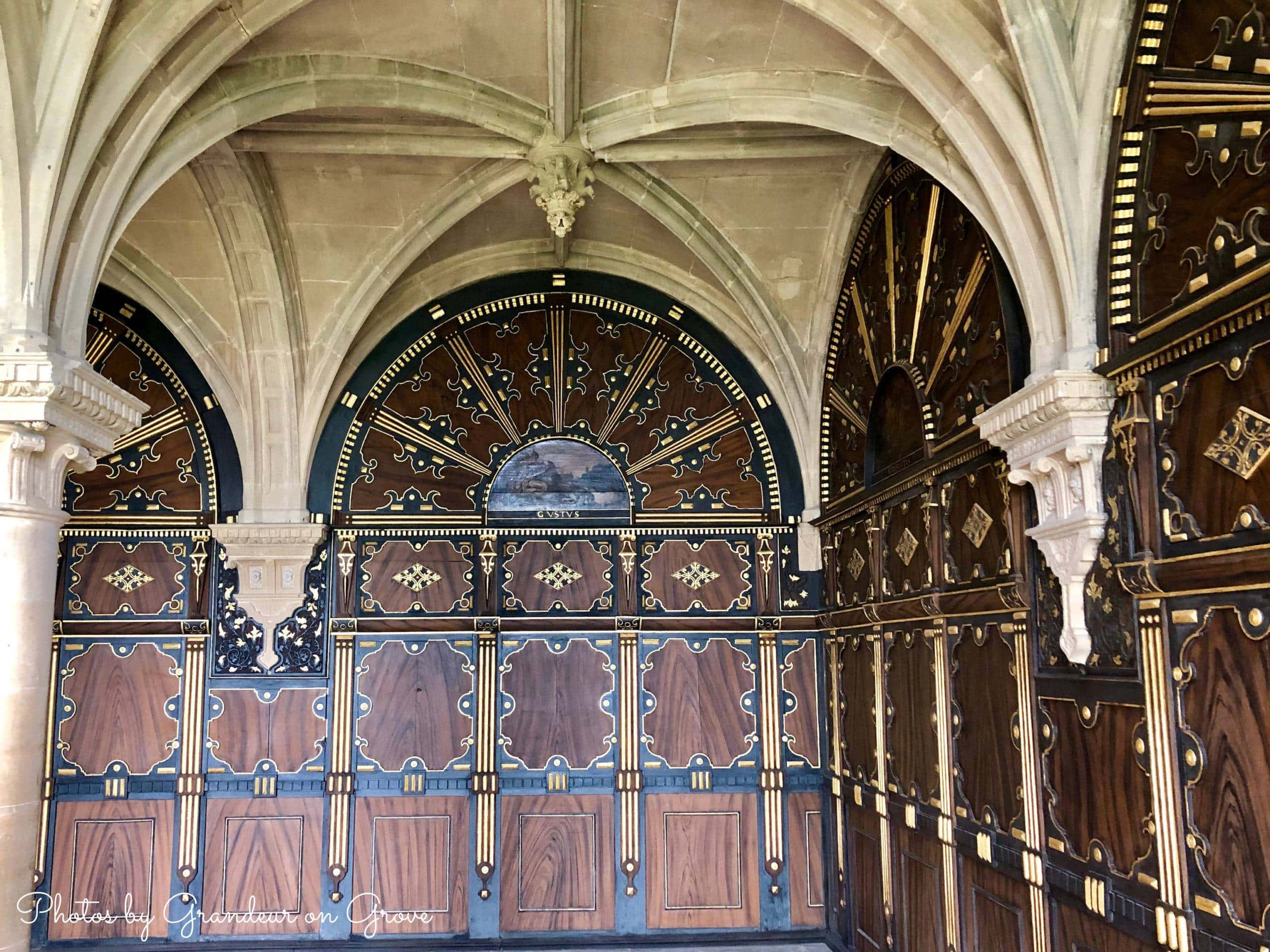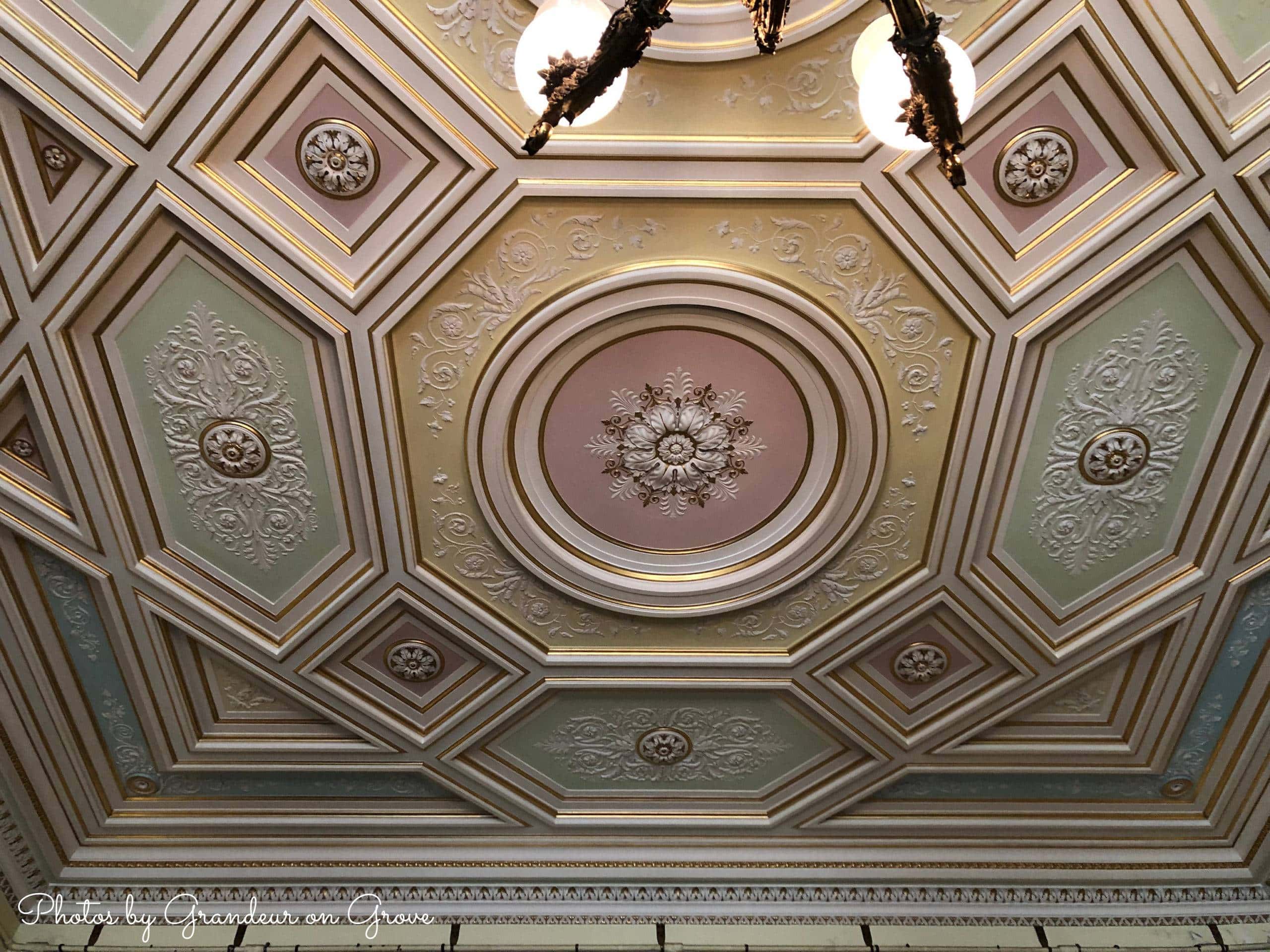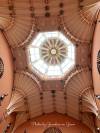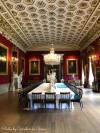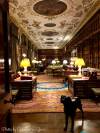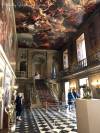Nothing says opulence like an ornate ceiling in a historical building. Whether dramatic arches, figurative paintings, impressive carvings, or sculptural relief work, architects, artists, and designers of the past paid a lot more attention to what was going on above them in a room. The addition of their artistic and architectural ceiling details immediately made a space feel grander. In today’s design world, ceilings may be painted or wallpapered, or you might see some exposed beams or tin tiles, but overall the ceiling’s role in a room’s design is often ignored. This article will discuss some of the design elements of historical ceilings and consider how today’s traditional homes can replicate some of these aspects.
I’ve observed that the historical ceilings that appeal to me incorporate some of these design elements:
Craftsmanship
Outstanding craftsmanship often produces breathtaking ceilings that boast astounding carpentry or masonry, intricate carvings, ornamental sculptural reliefs, and lavish paintings. I think of the individuals who contributed their considerable skills and time to making something so stunning.
Shape
I have a keen appreciation for an elegant arch, whether it’s a complete arch as you enter a room or several arches reaching up to form a dramatic apex. I respect the architectural wisdom that uses heavy stones in upward sweeping arches to hold together impressive ceilings at seemingly impossible angles.
Texture
I savor ceiling texture derived from decorative wooden beams, coffered shapes, delicate wooden carvings, and elaborate plaster moulding reliefs, among many other materials and techniques.
Pattern
Patterns are a commonly used feature, sometimes demonstrated with a repeated element or shape, such as with coffered ceilings. Symmetry, one of my favorite design features, can often be seen in the use of distinctive repeating shapes or coordinated paintings.
Storytelling
The paintings on ceilings almost always tell a story, whether they are religious, allegorical, or symbolic in nature. Sometimes paintings tell a story about the fashions of the time through the use of particular botanicals or then-exotic cultural themes, such as those used in Chinoiserie. Patterns in painting and carvings sometimes also incorporate storytelling by incorporating design elements with symbolic meanings, such as portions of a family crest, personal insignia or initials, or representative animals or plants of the region.
Light
Ceilings can dictate the way light fills a space, such as in the use of domed windows. Using shiny gold and metallic paints both reflects light and exhibits wealth. Ceilings with an impressive design also can anchor a gigantic light fixture, drawing the eyes up to see both the fixture and the decorative elements of the ceiling.
This slideshow features ceilings I’ve seen in Europe and California that I found particularly inspiring. See if you can spot some of these design elements and comment below about which were your favorites. Then, scroll down to see how to capture the spirit of these beautiful ceilings in your home design.
All these amazing ceilings have inspired me to consider the top wall in my room designs. Here are some ideas I’ve considered and/or used to infuse color, add sculptural relief, and set a mood:
Crown molding
Crown molding is, by far, the most common ceiling detail found in today’s homes. They add an elegant transition between the walls and the ceiling, architectural interest, and texture.
Painting
Painting a ceiling a color other than white can help you continue a theme or create a mood. In a dining room, a blue ceiling stretches the sky part of a mural across the entire surface, giving the room a feeling of being outside.
Wallpaper or Fabric
Wallpaper or fabric upholstery used on a ceiling can make a bold statement on its own, or when extended from the walls up to the ceiling in a continuous line, can make the room feel taller and smooth out the look of a room with many different wall angles. Using striped fabrics can create a playful tent-like feeling in a room.
Ceiling medallions
Use ceiling medallions that are available at Home Depot or Lowes. You can paint them with ceiling paint or any accent color and some come finished in wood or metallic colors. You install them between the ceiling and the base of your light fixtures or ceiling fans.
Here are some examples of ceiling medallions I’ve used:
![]()
![]()
I’ve been inspired to use a stencil kit to create a decoration around the light fixture in my living room. The stencil’s intended use is for coffered ceilings. Unfortunately, I do not have coffers, but I will use the stencil as a ceiling medallion instead. The project is a work in progress and I will post the DIY article when it’s complete. Stay tuned for the finished results of this stenciled ceiling medallion. Meanwhile, here’s a sneak peek at customization of the stencil design, color scheme, and color placement plan.
![]()
The next time you are in an old building, be sure to look up at the beautiful designs. And give some thought to how you might add some traditional design elements to your forgotten ceiling spaces.

